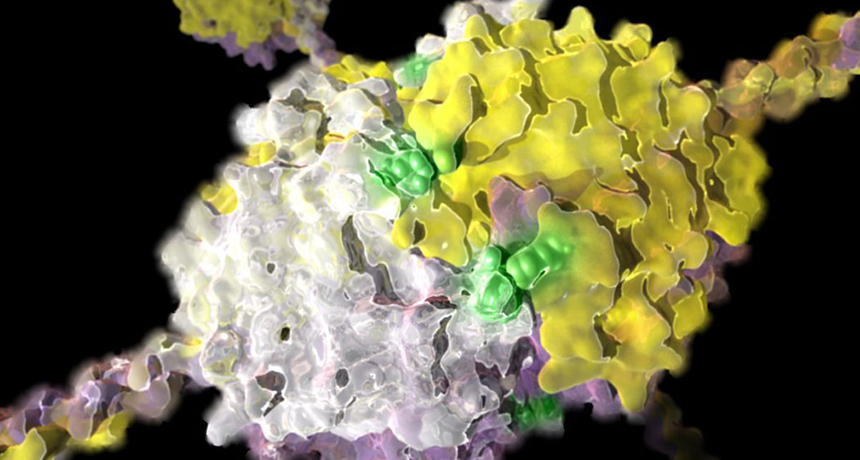Ancient bond holds life together, literally
Animal tissues and organs may require a specific link between sulfur and nitrogen

BOND OF LIFE A link between nitrogen and sulfur atoms (bond shown in green) helps hold together protein strands (yellow and white) that create a cellular scaffold essential for tissue and organ formation.
Courtesy of Jean-Philippe Cartailler, Symmation LLC






